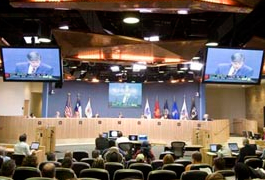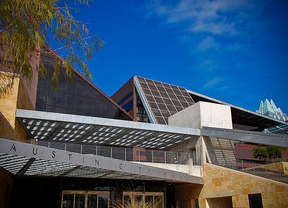There has been a lot of discussion lately in Austin about Proposition 3, which seeks to change the current form of city government from an at-large 6 member council to a council of 10 single-member district representatives. While Proposition 3 advocates continue to tout the merits of district representation, there has been little discussion of the very real dangers of a single-member district system.
Argument: District Representation Empowers Minorities
Reformers suggest that district representation will provide greater representation for minorities. The first issue here is whether we should truly have a preference for descriptive representation (your representative looks like you) over substantive representation (your representative thinks like you). A representative’s ability to represent your interests only if they look like you is in my opinion not only incorrect, but offensive. We should be more concerned with the values of the representative for whom we are voting than what they look like, as there is no guarantee that a representative that looks like you really votes in your community’s interests.
That argument aside, providing greater descriptive representation for minorities through districting is based on an assumption that minorities are geographically concentrated and can be uniformly packed into district boundaries. However, minorities are increasingly dispersed in Austin and the trend is likely to continue as home prices rise in historically minority-majority neighborhoods. While studies do find that African-Americans have benefited from district-based systems as a whole, women actually benefit from at-large systems. Furthermore, some minority groups, such as the LGBT community, have no geographic concentration whatsoever. The ability of district-based representation to better represent minorities is thus severely limited. It may also interest readers that the current at-large system is in fact quite representative of the city’s ethnic makeup. Census estimates from 2011 suggest that Austin’s population is 8.1% African-American and 35.1% Hispanic. Exact descriptive representation would suggest the Council be comprised of 3 females (it already is), one African-American (it already is), and two Hispanics (currently, there is one). This seems awfully close to descriptive representation already.
Argument: Districts bring government closer to the people
Many of our interests are not tied to a location, and those that are cannot easily be defined geographically. How many of us know which county commissioner represents us? How about our house representative in the state legislature? The majority of us do not. We are inundated with campaign posters for an array of representatives because where we live, work, shop, pray, and play cross jurisdictional boundaries. Our lives transcend arbitrary administrative boundaries. Dividing the City of Austin into 10 arbitrary districts will undoubtedly fail, even with non-partisan citizen organizational support, to create cohesive “communities of interest” because most of us are tied to more than one part of the city. Given the extensive fragmented political structure in which we already find ourselves, can we not at least maintain the City of Austin as one indivisible geographic entity?
Argument: Councilmembers will cooperate to make the city better
Proponents argue that politicians in Washington routinely work together on national issues despite representing specific geographic areas. In reality, political fragmentation is a major issue at the state and federal levels. Advocates fail to mention the earmarks, the “Roads to Nowhere”, that benefit specific areas at the expense of the nation as a whole. There are endless examples of national interests sacrificed to appease charismatic representatives of specific states and districts.
Secondly, cooperating to make the city a better place is hard enough without being accountable to distinctly-bound city districts. Imagine some of the major issues that Austin will be facing in the coming years: a major transit plan, the siting of a university hospital, the addition of utility and roadway infrastructure, and other major investments. Imagine now, that you are a representative of one specific district that may not be the location of the sited hospital. Perhaps you represent a peripheral district and the proposed transit route will not serve your area. Are you doing right by your constituents by supporting these projects if they do not directly benefit residents of your district? This is the failure of fragmented representation, and it threatens the future of the City of Austin.
Finally, there is the issue of the prominence of our central areas. While readers may disagree, not all areas of the city were created equal. Downtown, the economic hub of our region, has fewer residents than other areas, but it is the most critical part of ensuring our city’s well-being. District-based systems will largely dilute the importance of the downtown. We could face a kind of “tyranny of the periphery,” where City Council increasingly votes in favor of suburban, bedroom neighborhoods interests over central areas, despite the fact that these areas are critical to our future. So much for keeping Austin weird!
No system is perfect, but anything is better than Proposition 3
No system is without its flaws. The current system may well have too few representatives to effectively represent the interests of our large city. It may represent those that are more politically active than unengaged or disenfranchised residents. Proposition 4, which seeks to create 8 single-member districts and 2 at-large council positions, would surely be a better option for Austin than an entirely fragmented system of 10 districts. Ultimately, any system will be better than offered by Proposition 3.
What do you think?
Proposition 3 – Austnites for Geographic Representation 10-1 (AGR)
Proposition 4 – Austin Community for Change 8-2-1 (AC4C)
The Austin Bulldog: Non-Profit Investigative Reporting in the Public Interest
Comment below and share your thoughts.


